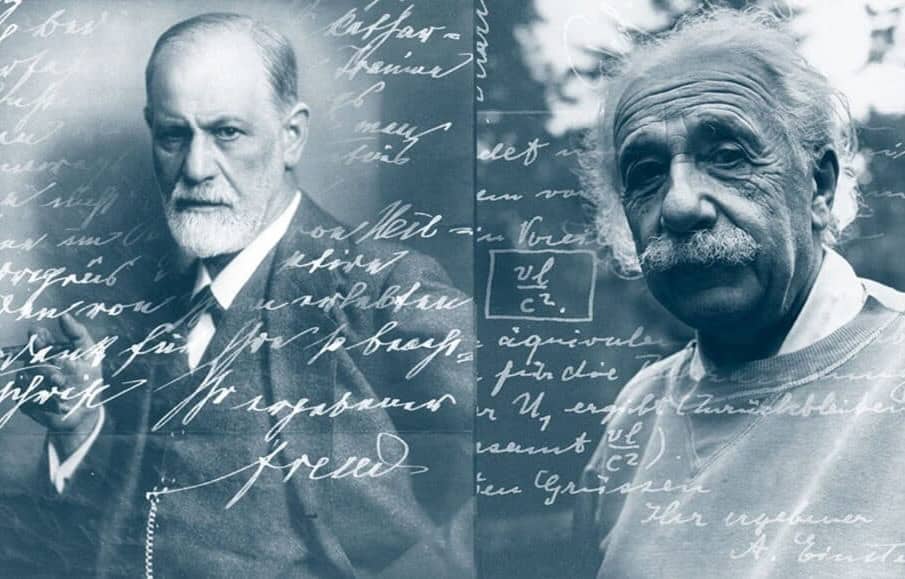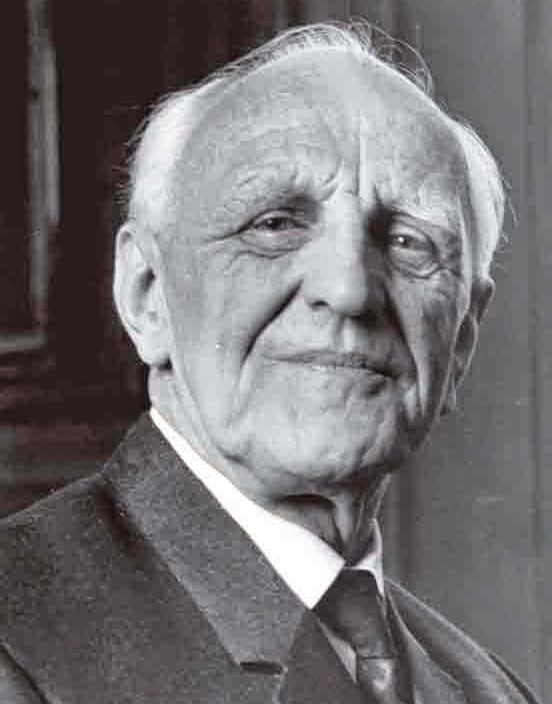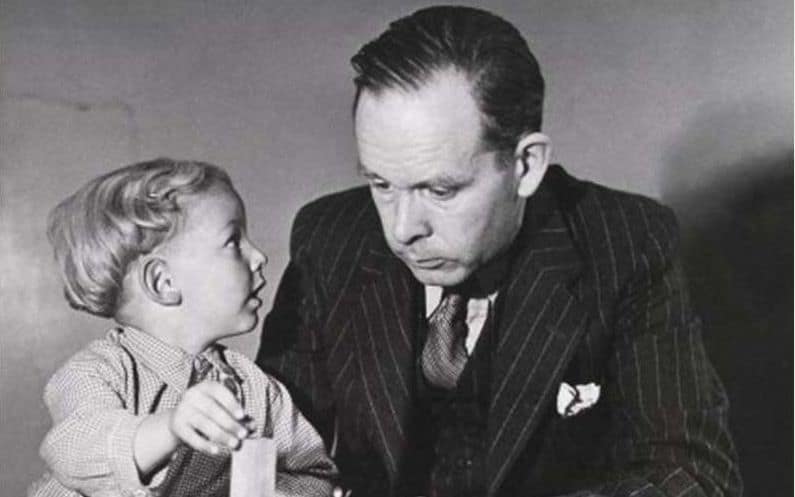
The term PTSD and its diagnostic criteria changed over the past hundred years. The diagnosis was initially referring to the combat trauma. In the past half century, the diagnosis relates not only to soldiers but also to other individuals struck by sudden traumatizing events causing the same symptoms initially observed only by the military personnel.
Firstly, during World War I and between the wars, the combat trauma was called “shell shock” or “war neurosis.”
At the end of the war, a debate about the origin of PTSD arose between Freud’s followers and the military psychiatrists engaged. The first were downplaying the emphasis on the external stimuli causing the “shell shock,” respectively, “battle fatigue,” defending its infantile origins. This discussion continues to this day.
During WW II, the combat trauma was renamed into the less shocking term “battle fatigue.” For a long time, the military establishment neglected the psychological impact of the combat trauma. Exemplary of such perception was the incident during WW II when the American general George Patton slapped two soldiers, finding them at evacuation hospitals away from the front lines without visible physical injuries.
Today, we understand that PTSD can be triggered by a range of traumatic experiences, from sexual assault and war to witnessing a murder or surviving a disaster like a train crash. The symptoms are equally varied, affecting the mind, body, and emotions. Victims may experience memory loss, insomnia, chronic pain, headaches, stomach issues, depression, or sudden fits of rage.
PTSD in Civil Accidents
In the late 19th century, victims of railway accidents began reporting a range of symptoms that medical professionals struggled to explain. These symptoms, which had never been observed before, appeared exclusively after train crashes. As crashes became more frequent, more survivors came forward claiming persistent physical and mental effects. Their symptoms varied widely, ranging from memory loss, sleep disturbances, and anxiety to headaches, back pain, and even paralysis. Since physicians couldn’t find any physical injury, many dismissed these cases as fabricated. However, the affected individuals continued to report symptoms for years. These unexplained responses would later influence psychological theories, including those by Sigmund Freud, who explored trauma and the Freudian slip meaning in the context of unconscious conflict. Today, such trauma is better understood, and seeking help from a qualified therapist in Dubai can provide effective treatment.
Sir John Eric Erichsen and the “Railway Spine”
In 1866, the renowned surgeon Sir John Eric Erichsen proposed that these symptoms were the result of spinal concussion, a condition he called “railway spine.” Erichsen suggested that the jolting motion from a crash caused inflammation of the spinal cord, even in the absence of a fracture. His hypothesis gained significant traction, especially in legal cases where passengers sought compensation for train-related injuries. For decades, “railway spine” remained a highly debated condition.
In 1883, railway surgeon William Page challenged the idea that these symptoms stemmed from a physical spinal injury. He argued that in cases where no direct spinal damage was present, the symptoms were of psychological nature.
Meanwhile, the famous French neurologist Jean-Martin Charcot believed the railway spine was purely psychological, with no physical injury involved, and nothing more than hysteria, a term frequently used to describe nervous instability, particularly in women.
PTSD. From Shell Shock to War Neurosis
The scientifically documented history of PTSD started during World War I. During the “Great War,” many analysts were confronted with the trauma of “shell shock” in treating traumatized soldiers. During WWI, Sandor Ferenczi worked with traumatized soldiers in Budapest; Max Eitingon and Karl Abraham in Berlin.
At the same time, psychiatrists coined the term “Traumatic War Neurosis” for the combat trauma, following the terminology of Freud’s psychoanalysis, which became the first psychotherapy method used for the treatment of the war trauma. Later, more effective therapy methods such as Eye Movement Desensitization and Reprocessing (EMDR), Cognitive Processing Therapy (CPT), and Prolonged Exposure (PE) followed.
The trauma of World War II influenced many of the founders of psychodynamic psychology. Paradoxically, contact with war victims, including children, helped develop theoretical foundations and effective treatment methods for PTSD.
Today we forgot the fact that psychoanalysis helped to understand the close and complex relation of physical illnesses to states of mind. In the history of PTSD research, psychoanalysis was the first early method for the treatment of “war neurosis.”.
Psychoanalysis in Treatment for PTSD
The formative figure in the history of PTSD treatment and research was Sigmund Freud, who developed the first psychotherapeutic method known as psychoanalysis. A pioneer in Freud psychology, he introduced concepts that still influence modern therapy. For Freud, the “Great War” was deeply traumatic not only was he concerned for his three sons serving in the military, but he was also struck by personal tragedy when his beloved daughter Sophie died suddenly from the Spanish flu while pregnant. Amid this immense loss, Freud continued his work and wrote Beyond the Pleasure Principle, a key text in Freud theory. The suffering and destruction of the war deepened his skepticism about human nature and revealed how fragile civilization truly was. Today, many therapists, including those practicing in therapist Dubai clinics, draw on Freud’s foundational insights when treating trauma and PTSD.
Freud worked with soldiers returning from World War I. He and other psychoanalysts described the symptoms of combat trauma as war neurosis. Freud treated the traumatized soldiers with his own method, psychoanalysis, at that time the only available psychological treatment.
Freud observed repetitive dreams and memories by the victims of war related to the traumatic experiences. He wrote, “Dreams occurring in traumatic patients have the characteristic of repeatedly bringing the patient back into the situation of his accident.” This phenomenon observed by Freud is one of the diagnostic criteria for today’s PTSD diagnosis.
Freud’s Change of Paradigm
In his book “Beyond the Pleasure Principle,” Freud put forward the concept of the “death instinct,” standing in opposition to the “life instinct.” With this acknowledgment, he changed the paradigm of his own psychoanalytic theory, in which initially he identified only one “instinct” called “libido.” Freud defined libido as the vital energy or driving force of all human desires and actions and was convinced of its exclusively sexual nature.
Freud created an important landmark in the history of research on war neurosis, respectively, PTSD. He concluded that self-preservation and the tendency toward creative, life-producing drives are contradicted by the death drive. He wrote, “The purpose of all life is death.”
Freud’s “modified version” of psychoanalytic theory was inspired and transformed by the assumption of two opposing tendencies in human nature. The drive to unfold and preserve life contrasts with the urge to destroy others, ourselves, and even civilization. Human history, consisting of epochs of creation interrupted by violence, war, and destruction, seems to support Freud’s pessimistic hypothesis.
“Beyond the Pleasure Principle”
The catastrophic experiences of World War I forced the pioneers of psychoanalysis to focus their attention on the psychological consequences of trauma. In his lecture “Fixation on Trauma, the Unconscious,” Sigmund Freud defined trauma as an experience that overwhelms the mind with an excessive amount of stimulation in a short period, making it impossible to process or cope with it in the usual way.
The experience of World War I and his research on the war neurosis modified Freud’s position. Initially, he assumed that the origin of neurosis was purely of a sexual nature. In 1920, in his book “Beyond the Pleasure Principle,” he added the existence of the “death instinct,” also called “Thanatos,“ opposite to the “life instinct” or “Eros.”
At first, Freud was sceptical about the existence of the “death instinct.” The first concept assuming the existence of the “death instinct” was already published in 1912. A Russian psychoanalyst and Freud’s collaborator, Sabina Spielrein, emphasized in her paper “The Importance of the Destructive Tendencies in the Human Psyche.” By a paradoxical coincidence, Spielrein and her two daughters became later victims of WWII.
Trauma and the “Ego-Conflict”
Freud described trauma as an internalized danger that leads to a psychological split, or what he called an “ego conflict.” He viewed war neuroses as a type of traumatic neurosis triggered by this internal conflict. According to Freud, this conflict arises between a soldier’s peaceful self and his war self, becoming acute when the peaceful self realizes the life-threatening risks posed by the reckless, war-driven part of his psyche.
However, Freud also noted that trauma-related neuroses are not exclusive to war; they also occur in peacetime after shocking events or severe accidents, without necessarily involving an inner conflict. This division within the self has lasting consequences, as it creates a permanent rupture in the psyche that never fully heals and may even worsen over time. His theory of ego splitting influenced many later psychoanalysts, including Melanie Klein and Otto Kernberg, who specifically focused on trauma.
The study of early childhood trauma also emerged in the early days of child psychoanalysis and developmental psychology. Researchers such as Anna Freud, Dorothy Burlingham, and John Bowlby conducted systematic studies on the effects of trauma in infancy. Their findings remain influential today. They identified physical pain, traumatic separations, and loss of caregivers as the most common causes of early childhood trauma. These experiences become deeply ingrained in the psyche as implicit, procedural memories that shape a person’s emotional life and behavior throughout their lifetime.
Transgenerational Transmission of Trauma
Transgenerational transmission of trauma occurs when an entire community or identity group experiences psychological trauma when the psychological impact of these events continues to affect future generations. This trauma isn’t just a personal experience—it’s something that affects the group as a whole and is passed down through generations.
The horrors of Nazi terror deepened the study of transgenerational transmission of trauma, as researchers examined the long-term psychological effects of extreme persecution. Jewish Holocaust survivors lived through an unimaginable collective trauma. A Jewish person born long after the Holocaust might struggle with deep-seated anxiety, hypervigilance, or a survivalist mindset, fearing another catastrophe despite never having lived through one. Similarly, Indigenous Peoples in Canada endured deep suffering during the era of residential schools, and African Americans faced immense generational pain due to slavery.
This kind of trauma can affect entire cultural groups—those who share a common ethnic, national, or religious identity—but it can also manifest on a smaller scale, within families or even individual parent-child relationships. Survivors of childhood abuse, as well as both direct victims of collective trauma and their descendants, may develop complex post-traumatic stress disorder (C-PTSD).
Freud about War and Human Nature

Why war? In 1932, Freud received an anxious letter from Albert Einstein asking him if there was a way of freeing humankind from the aggression and threat of war. Considering the destructive drive in humans, Freud presented a rather pessimistic outlook for the future of mankind. Freud wrote in his letter to Einstein: “Conflicts of interest between man and man are resolved, in principle, by recourse to violence. It is the same in the animal kingdom, from which man cannot claim exclusion; nevertheless, humans are also prone to conflicts of opinion, touching, on occasion, the loftiest peaks of abstract thought.
Anna Freud, PTSD Treatment for Children
Freud’s daughter, Anna Freud, worked during WWI in a nursery for children. She continued her work during and after World War II, treating the war orphans. She became one of the founders of psychoanalytic child psychology alongside Melanie Klein. During WW II, she observed the effect of deprivation of parental care on children. She set up a center for young war victims called “The Hampstead War Nursery.” The underlying idea was to give children the opportunity to form attachments by providing continuity of relationships.
Donald Winnicott

Winnicott (born 1896) was a pediatrician and psychoanalyst and a leading figure in the field of object relation theory. Winnicott received his medical degree in 1920 and worked as a pediatrician and child psychoanalyst at Paddington Green Children’s Hospital in London. Trained at a military hospital in Cambridge and serving in the Navy, he described the confrontation with death as a defining trait of his generation.
A mother “good enough”
Winnicott’s ideas were derived from Melanie Klein’s theories. He believed that the psyche of a child develops in relation to a real, influential parent. His emphasis on the mother as a “good-enough mother” who relates to the child with “primary maternal preoccupation” is central to the healthy development of the child’s self. Winnicott argues that “the foundations of a child’s health are laid down by the ordinary mother in her ordinary loving care of her own baby.” According to Winnicott, a failure of the mother to provide a “holding environment” can lead to the development of a “false self.” The false self is a defense mechanism that is created when the child’s real self is not recognized or acknowledged by the mother. The false self is a facade that the child presents to the world, not being able to recognize its true self.
Holding environment
Winnicott became one of the key figures in the history of PTSD treatment. During World War II, he served as a pediatrician for the Child Evacuation Program. Winnicott’s pediatric research on traumatized children led to the development of his concept of a “holding environment.”.
In contrast to other psychoanalysts using Freudian terms such as “Ego” and “Id,” Winnicott used the term “Self” to refer to both. The term “Self” was previously established by Carl Gustav Jung. However, Winnicott used it in a different context. For Winnicott, feeling real and being in touch with oneself and others was essential to life. The feeling of being alive and authentic in mind and body and expressing spontaneous emotions allows people to connect with others and develop their creativity.
John Bowlby, PTSD and the Child Trauma in WW II

The war affected not only adults but also children like John Bowlby, who later became a psychiatrist and psychoanalyst. At the outbreak of World War II, Bowlby, at the age of seven, was sent away to boarding school. Over this time, he barely saw his father. Bowlby’s childhood experiences influenced his later studies on child development. Bowlby’s research leading to his “attachment theory” became one of the most formative discoveries related to child psychology.
The Attachment Theory
Newborns develop strong bonds with their caretakers, which reflect the child’s need for safety, security, and protection. Such an affectionate bond is the crucial prerequisite for the formation of a sound child’s personality. It creates for the child the safe base from which it can explore the world.
Bowlby’s attachment theory holds that children instinctively attach themselves to their carers to survive. The presence of a supportive attachment figure is of crucial importance during the early years of a child’s development. The fears in children exposed to danger decrease through access to a secure figure.
Separation Trauma

The quality of the emotional relationship between carers and children outweighs the importance of time spent. The biological mother is usually the primary carer, but anyone who behaves “like a mother” can fulfill this role. This means that the bond between child and carer is not defined by “blood.” The primary carer may also be a father, grandmother, or another person who provides the necessary social involvement and most of the childcare.
Separation stress occurs when a carer is unavailable or unresponsive. John Bowlby established that the profound grief exhibited by children upon losing their primary carer is a natural reaction to their innate dependence on her presence. In infants, physical separation causes fear and anger, followed by sadness and despair.
Although children usually manage to endure this ordeal, they often do so by adopting a defensive stance of emotional detachment. They tend to become excessively self-absorbed and dependent. As a result, they may harbor lingering doubts about their ability to elicit care and affection, and their demeanor may appear odd and aloof. Such behaviour can make it difficult for them to form close relationships with others.
Bowlby’s research emphasized the devastating effect of child separation, contributing to the understanding of PTSD.

Establishing the PTSD Diagnosis
After World War II, everyone was hoping that war would never happen again. The research on the war trauma (synonymous with PTSD) stagnated. The 1952 edition of the DSM-I includes the diagnosis of “Gross Stress Reaction,” which was similar to the modern definition and understanding of PTSD. “Gross Stress Reaction” was defined as a “normal personality utilizing established patterns of reaction to deal with overwhelming fear” as a response to “conditions of great stress.”.
The research on war trauma started again in the 1960s. The new awoken interest in PTSD was raised as a consequence of the Vietnam War and the high number of traumatized US military veterans. PTSD was officially recognized as a psychiatric disorder by the American Psychiatric Association (APA) in 1980 in the third edition of the Diagnostic and Statistical Manual of Mental Disorders (DSM).
Along with establishing the diagnosis of PTSD, different therapeutic methods for this condition have also been developed. Until today, the most effective treatment for war trauma is psychotherapy, which has its roots in Freudian psychoanalysis.
PTSD. From Shell Shock to War Neurosis. Summary
Although intense psychological reactions to war and violence have been described since ancient times, an officially recognized diagnosis of Post-Traumatic Stress Disorder (PTSD) only came into existence in 1980. Before the term was officially recognized, it went through various names, including hysteria, soldier’s heart, shell shock, battle fatigue, and combat stress reaction.
The outbreak of “shell shock” among the soldiers in WWI demonstrated that neurotic symptoms such as stuttering, convulsions, and paralysis are of psychological nature. However, such a conclusion questioned the main pillar of Freud’s early psychoanalytic theory, assuming a purely sexual origin of neurosis.
Trauma after Civil Accidents
An early conceptualization dates back to London surgeon Eric Erichsen, who, in 1866, proposed the influential theory that psychological symptoms following railway accidents could be explained by molecular changes in the spinal cord caused by the jolting of the spine—an idea known as “railway spine syndrome.”
The controversy surrounding Erichsen’s theory led to new discussions, which in turn influenced the work of Charcot, Pierre Janet, and Sigmund Freud—figures whose contributions shaped modern psychology. Without these early debates, we might never have arrived at our current understanding of PTSD.
Evolution of PTSD Diagnosis
During World War I and World War II, up to 10% of soldiers became unfit for duty due to psychological breakdowns caused by combat, a condition then referred to as “shell shock.” What these victims were actually experiencing, however, was nothing else but PTSD.
After World War II, the interest and the research on war trauma stagnated. First, the Vietnam War shifted the attention again to the combat-related trauma. The American Psychiatric Association (APA) coined the term “Post-Traumatic Stress Disorder” and integrated it as a psychiatric diagnosis into the diagnostic system (DSM). In fact, much of the available published research regarding PTSD is based on studies done on veterans of the war in Vietnam.
Research into the severe long-term psychological effects experienced by victims of Nazi persecution, along with the political activism of Vietnam War veterans and findings from clinical studies, ultimately led to the inclusion of PTSD diagnosis in the DSM-III in 1980.
Ironically, even tragic accidents and wars played a role in advancing medical science, proving that sometimes, history’s most painful moments lead to its greatest discoveries.


